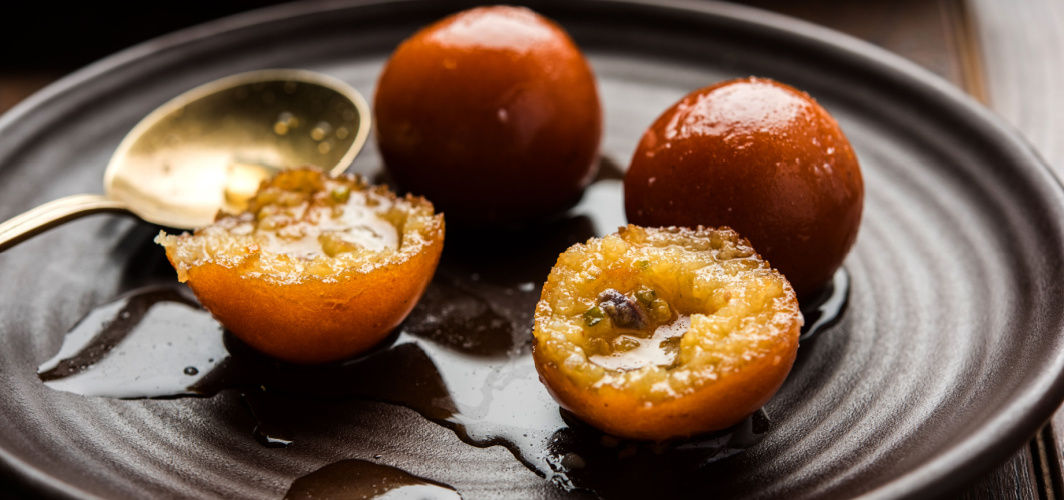Diabetes Management
Your 5 Favorite Sweets and Their Healthier Alternatives
2 min read
By Apollo 24|7, Published on - 23 October 2023
Share this article
0
0 like

The festive season is incomplete without sweets. However, for individuals with diabetes or those aiming for a healthier lifestyle, sugar-loaded sweets might not be the best choice. Hence, it is recommended that you opt for healthier alternatives to manage your blood sugar levels. In this blog, let’s explore a few sweets and their diabetes-friendly alternatives.
1. Whole Wheat Gulab Over Traditional Gulab Jamun
Gulab Jamun are deep-fried dumplings that are soaked in sugar syrup. Though they are a sweet delight, they are loaded with unhealthy fats and refined sugars. Hence, you can go for whole wheat gulab jamun which uses wheat flour. Bake the jamuns instead of frying them, and use sugar substitutes like stevia or erythritol in the syrup. The result is a healthier, diabetes-friendly option that retains the authentic flavour.
2. Baked Jalebi Over Regular Jalebi
This crispy and coiled sweet is prepared by deep-frying refined flour batter and soaking it in sugar syrup. It's a treat loved by many, but it's high in unhealthy carbohydrates. You can go for baked jalebis which uses whole wheat flour, minimal oil, and a sugar substitute.
3. Brown Rice Pudding Over Classic Rice Pudding (Brown Rice Kheer)
Made with white rice, full-fat milk, sugar, and raisins, classic rice pudding (kheer) is a comfort dessert but has a high glycemic index. You can replace white rice with brown rice, use skimmed milk or a milk substitute, and choose a sugar substitute. This alternative offers the same creamy goodness with a lower impact on blood sugar levels.
4. Cottage Cheese (Paneer) Rasgulla Over Regular Rasgulla
Instead of regular cheese, use low-fat paneer or skimmed milk and opt for a sugar substitute to make it protein-rich and low on carbs.
5. Sugar-Free Barfi
Barfi, a popular Indian sweet, is traditionally laden with sugar, condensed milk, and ghee. You can substitute sugar with a sugar-free sweetener. You can also use low-fat milk and reduce the ghee content. This transformation creates a barfi that's kinder to your blood sugar levels while still retaining the authentic taste.
Conclusion
You don't need to forgo your favourite sweets entirely if you have diabetes or want to pursue a healthier diet. By making smart ingredient substitutions, opting for whole grains, using sugar substitutes, and exploring alternative preparation methods, you can enjoy a diabetes-friendly version of your beloved treats.
Diabetes Management
Consult Top Diabetologists
View AllLeave Comment
Recommended for you

Diabetes Management
Diabetic Foot: Can it be Prevented?
The development of diabetic foot can be prevented through various measures. Effective prevention includes regular foot care, such as daily inspection and cleaning, wearing comfortable and proper-fitting shoes, managing blood sugar levels, controlling blood pressure and cholesterol, maintaining a healthy lifestyle, avoiding smoking and alcohol consumption, and seeking immediate medical attention for any foot issues.

Diabetes Management
Type 2 Diabetes: Is It Curable?
Diabetes is a chronic illness in which the body cannot process blood sugar. There are two types of diabetes - type 1 and type 2. Though type 1 diabetes has no cure, you can reverse type 2 with treatment and lifestyle modifications.

Diabetes Management
These Foods Can Increase Your Risk Of Diabetes
Nitrates and nitrites in processed foods may increase the risk of type 2 diabetes. It is important to avoid foods containing nitrates and have a balanced diet that is low in refined carbohydrates, high in fibre and rich in nutrients.
Subscribe
Sign up for our free Health Library Daily Newsletter
Get doctor-approved health tips, news, and more.
Visual Stories

8 Fruits That are Incredibly Healthy for Diabetes
Tap to continue exploring
Recommended for you

Diabetes Management
Diabetic Foot: Can it be Prevented?
The development of diabetic foot can be prevented through various measures. Effective prevention includes regular foot care, such as daily inspection and cleaning, wearing comfortable and proper-fitting shoes, managing blood sugar levels, controlling blood pressure and cholesterol, maintaining a healthy lifestyle, avoiding smoking and alcohol consumption, and seeking immediate medical attention for any foot issues.

Diabetes Management
Type 2 Diabetes: Is It Curable?
Diabetes is a chronic illness in which the body cannot process blood sugar. There are two types of diabetes - type 1 and type 2. Though type 1 diabetes has no cure, you can reverse type 2 with treatment and lifestyle modifications.

Diabetes Management
These Foods Can Increase Your Risk Of Diabetes
Nitrates and nitrites in processed foods may increase the risk of type 2 diabetes. It is important to avoid foods containing nitrates and have a balanced diet that is low in refined carbohydrates, high in fibre and rich in nutrients.